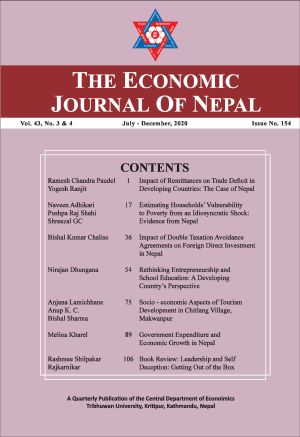Government Expenditure and Economic Growth in Nepal
DOI:
https://doi.org/10.3126/ejon.v43i3-4.48040Keywords:
Government expenditure, Economic growth, ARDL, ECMAbstract
This study aims to investigate the relationship between the government expenditure on education, health, transportation, agriculture, and economic growth in Nepal from 1975 to 2019. The ARDL approach to co-integration and error correction approach is used to detect the long-run and the short-run relationship between RGDP and exogenous variables in the model. The study revealed the significant and positive impact of educational expenditure on economic growth in the long run. Similarly, health expenditure has a significant but negative impact on GDP in the long-run as well as in the short-run. Moreover, agriculture expenditure of the government is found to have a significant but negative impact on GDP in the long-run. The transportation expenditure is found to be insignificant. The study concludes that government expenditure along with spending pattern, channel of spending and effectiveness of spending are equally important to examine the true effect of government expenditures on economic growth.
Downloads
Downloads
Published
How to Cite
Issue
Section
License
© Cedecon-TU




